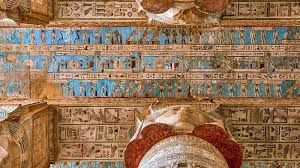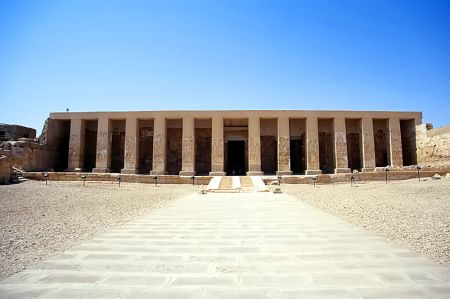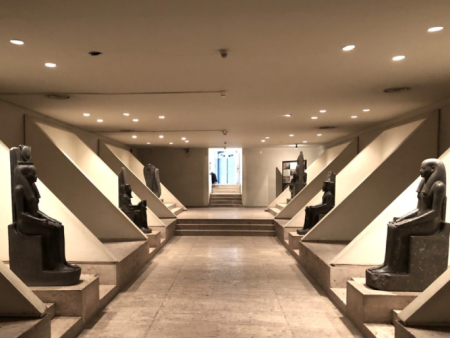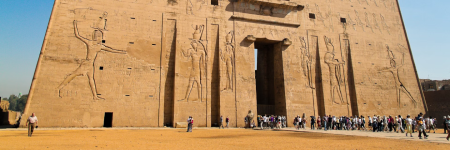habu temple

Habu Temple: The Eternal Glory of Ramses III in Luxor
Nestled on the west bank of Luxor, the majestic Habu Temple—officially known as the Mortuary Temple of Ramses III—stands as one of Egypt’s most breathtaking architectural masterpieces. This colossal structure, brimming with ancient carvings, hieroglyphic inscriptions, and vibrant reliefs, immortalizes the legacy of one of ancient Egypt’s most powerful pharaohs. With its towering gateways, fortified walls, and intricate depictions of religious ceremonies, the Habu Temple paints a vivid picture of Egypt’s New Kingdom grandeur. It’s not merely a temple; it’s a time capsule that preserves the spirit of a civilization obsessed with eternity. Every inch of stone reflects the artistry, devotion, and engineering genius that defined the reign of Ramses III, echoing through the desert winds for more than 3,000 years.
Visitors stepping through its massive pylons feel instantly transported into an era where divine kingship and afterlife beliefs shaped every facet of existence. The temple’s walls narrate epic wars, divine rituals, and moments of triumph—all carved with unmatched precision. As one of the best-preserved structures in Thebes, the Habu Temple is a treasure trove for archaeologists, historians, and travelers seeking a glimpse into ancient Egypt’s spiritual and political might. Surrounded by the scenic charm of Luxor City, it continues to attract adventurers from all corners of the world, standing tall as a symbol of divine power and artistic brilliance.
The Historical Significance of Habu Temple in Ancient Egypt
The Habu Temple wasn’t just a religious sanctuary; it was a monumental complex encapsulating the might of Pharaoh Ramses III, the last of Egypt’s great warrior-kings. Constructed during the Twentieth Dynasty, this mortuary temple honored both Amun—the chief deity of Thebes—and the divine essence of the pharaoh himself. The temple’s design mirrored the earlier structures of the New Kingdom, incorporating elements inspired by the Temple of Hatshepsut and the grand complexes of Medinet Habu.
Historians emphasize that Ramses III used the Habu Temple as both a place of worship and a political statement. The walls document his military victories, particularly against the Sea Peoples, a formidable confederation of invaders threatening Egypt’s borders. These scenes were not merely decorative—they were propaganda carved in stone, asserting Egypt’s dominance and divine protection under Amun’s watchful eye. Over the centuries, the temple also served as an administrative center, housing priests, workers, and artisans dedicated to preserving the royal cult.
Architectural Grandeur of the Habu Temple Complex
The Habu Temple’s architectural design is nothing short of awe-inspiring. Covering over 7,000 square meters, it rivals even the famous Karnak Temple in scale and complexity. Its massive entrance pylon, decorated with battle scenes, leads into expansive courtyards flanked by giant statues of Ramses III. Each wall, column, and archway tells a story—whether it’s a depiction of royal ceremonies, divine offerings, or celestial processions.
The temple also includes an inner sanctuary dedicated to Amun-Ra, as well as smaller chapels devoted to the gods Mut and Khonsu. The surrounding walls, known for their fortification-like structure, suggest that the temple doubled as a defensive stronghold. This unique blend of religious and military architecture makes Habu Temple one of Egypt’s most distinctive monuments. Its inscriptions, remarkably preserved, still retain traces of the original paint, offering a tantalizing glimpse into the vibrant colors that once adorned its stone surfaces.
Symbolism and Religious Rituals at Habu Temple
Spiritual symbolism lies at the heart of the Habu Temple’s design. Every corridor and chamber aligns with the ancient Egyptians’ cosmological beliefs. The temple served as a sacred stage where priests reenacted the daily renewal of the cosmos, invoking Amun’s blessings and ensuring the pharaoh’s eternal life. Offerings of incense, flowers, and sacred oils once filled the air, while chants reverberated through the halls, connecting the earthly realm to the divine.
Ritual scenes depict Ramses III participating in sacred ceremonies, presenting offerings to numerous deities. These images reinforced his divine legitimacy, illustrating his role as intermediary between gods and men. The temple’s calendar scenes also provide crucial insights into Egyptian festivals, especially the Beautiful Festival of the Valley, where Thebans celebrated their deceased ancestors. Habu Temple thus functioned both as a mortuary shrine and a living hub of religious fervor, blending devotion and pageantry in a timeless union.
Preservation, Restoration, and Archaeological Discoveries
Over millennia, the Habu Temple has withstood floods, invasions, and the relentless desert elements. Thanks to its robust construction and continuous restoration efforts, much of its art and architecture remain intact. Archaeological missions have uncovered intricate hieroglyphs detailing the temple’s original construction phases, economic records, and even graffiti left by ancient workers. Each discovery offers new insights into life during Ramses III’s reign and the cultural vitality of ancient Thebes.
Modern conservation projects focus on stabilizing the temple’s foundations and preserving its original pigments. The site now serves as a living museum, where visitors can explore beautifully restored chambers and admire carvings that still glow with divine grandeur. For travelers seeking a deeper understanding of ancient Egypt’s sacred landscapes, combining a visit to the Habu Temple with nearby sites such as the Valley of the Kings and the Colossi of Memnon creates an unforgettable historical journey.
Habu Temple and the Cultural Legacy of Luxor
Today, the Habu Temple stands as a cornerstone of Luxor’s cultural identity. It connects modern Egypt to its illustrious past, drawing both scholars and spiritual seekers. Luxor’s west bank is often described as the world’s largest open-air museum, and the Habu Temple is one of its crown jewels. Its grandeur rivals that of other monumental sites like the Luxor Temple and the Dandara Temple.
Beyond its architectural excellence, the temple remains a symbol of endurance—proof that Egypt’s ancient wisdom continues to inspire the world. Travelers often describe standing before its pylons as a humbling experience, a reminder of humanity’s timeless quest for immortality. Those who embark on Egypt Nile Cruises often include the Habu Temple in their itineraries to witness the seamless blend of history, faith, and artistry. The temple not only celebrates divine kingship but also encapsulates Egypt’s eternal relationship with the gods, the Nile, and the afterlife.
Why You Should Visit Habu Temple on Your Next Trip to Egypt
Visiting Habu Temple is an experience that goes beyond mere sightseeing—it’s an encounter with eternity. Standing amidst its towering columns, one can almost hear the echoes of ancient hymns and the whispers of priests performing their sacred duties. The temple’s remote location ensures a tranquil atmosphere, far less crowded than the more famous monuments of Luxor. This peaceful setting allows visitors to truly absorb the majesty and mystery of Egypt’s golden age.
For photography enthusiasts, the temple’s detailed reliefs and shadowed corridors provide countless opportunities for capturing breathtaking shots. History lovers will find themselves lost in its hieroglyphic narratives, decoding tales of divine justice, cosmic order, and royal triumph. And for spiritual travelers, the energy within these hallowed walls offers an almost mystical connection to the past. Pair your visit with expertly curated Egypt Travel Packages to explore Luxor’s surrounding wonders, ensuring a journey that blends cultural discovery and adventure.
Practical Travel Tips for Exploring Habu Temple
Reaching the Habu Temple is relatively easy from central Luxor, with taxis and guided tours operating daily. The best time to visit is during the early morning or late afternoon when the desert light bathes the temple in golden hues. Wear comfortable shoes, carry water, and take your time exploring each chamber—every wall holds a story worth discovering. Many travelers combine their visit with nearby attractions like the Avenue of Sphinxes or embark on Egypt Excursions that delve deep into Theban history.
Local guides, well-versed in ancient Egyptian lore, can bring the site to life, explaining symbolic meanings often overlooked. Whether you’re an avid historian or casual traveler, the Habu Temple promises an experience that stirs the imagination and deepens your appreciation of Egypt’s spiritual and artistic legacy. It’s a must-see for anyone exploring the timeless beauty of the Nile Valley.
Frequently Asked Questions about Habu Temple
What is the Habu Temple famous for?
The Habu Temple is renowned for its exceptional state of preservation and its detailed wall carvings depicting the reign of Pharaoh Ramses III. It’s particularly famous for the reliefs illustrating battles against the Sea Peoples and the vibrant religious ceremonies that highlight Egypt’s devotion to Amun.
Where is Habu Temple located?
The Habu Temple is located on the west bank of the Nile River in Luxor, Egypt. It lies near the Valley of the Queens and other major archaeological sites, making it an essential stop for anyone exploring ancient Thebes.
Who built the Habu Temple?
The temple was commissioned by Pharaoh Ramses III of the Twentieth Dynasty. He dedicated it to the god Amun and to his own divine cult, aiming to immortalize his victories and reaffirm Egypt’s power during his reign.
What can visitors see inside the Habu Temple?
Visitors can explore vast courtyards, towering pylons, and sanctuaries adorned with colorful hieroglyphs. The temple’s walls depict scenes of religious rituals, festivals, and military campaigns, offering an unparalleled glimpse into ancient Egyptian life and beliefs.
When is the best time to visit the Habu Temple?
The best time to visit is between October and April when temperatures are moderate and the lighting is perfect for photography. Morning and sunset visits provide the most atmospheric experience, allowing travelers to enjoy the temple’s serenity and striking visual contrasts.














